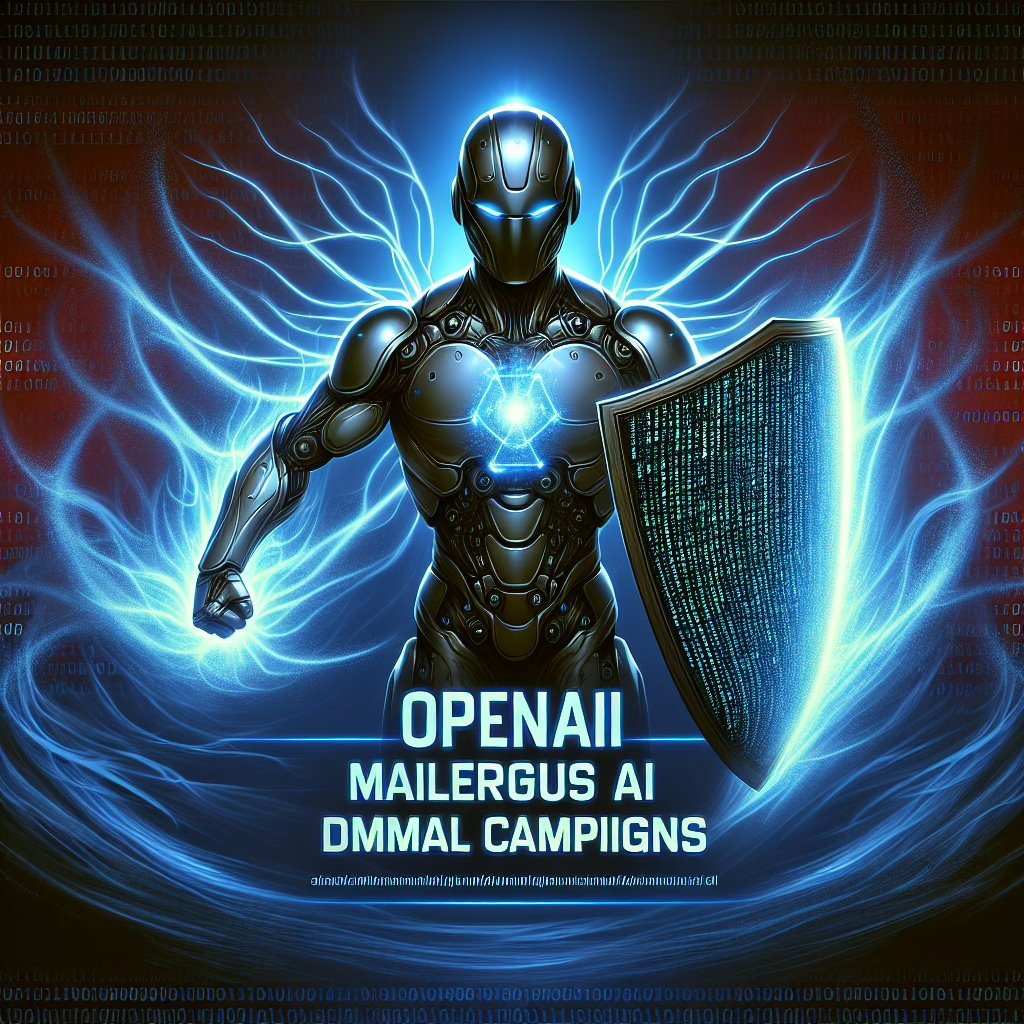In a thrilling twist of fate reminiscent of a superhero movie, OpenAI has swooped in to disrupt at least ten malicious AI campaigns already in 2025! Yes, you read that right. While most of us are still trying to figure out how to properly fold a fitted sheet, the tech wizards at OpenAI are busy saving the digital world from nefarious cyber villains.
What Exactly Happened?
This year, OpenAI has unveiled its impressive track record in combating those pesky AI-driven threats. Think of it as a high-tech version of whack-a-mole, where every mole is a sophisticated cyberattack waiting to spoil your day. The team at OpenAI has utilized advanced machine learning models to identify and neutralize these campaigns before they could cause any real damage. They’re not just sitting back and letting the robots take over – they’re actively engaging in a digital duel!
The Rise of Malicious AI Campaigns
As we’ve seen throughout 2025, the rise of malicious AI campaigns is akin to watching a sci-fi thriller unfold. Cybercriminals have become increasingly savvy, using AI tools to launch attacks that are more sophisticated than ever before. They’re leveraging everything from deepfake technology to automated phishing schemes that could fool even the most vigilant among us.
But fear not! OpenAI’s efforts are like a digital shield protecting us from these rogue robots. Their swift actions have thwarted numerous campaigns that would have otherwise wreaked havoc on individuals and organizations alike. By taking these proactive measures, OpenAI has set itself apart as a leader in cybersecurity.
How OpenAI is Winning the Battle Against Cyber Threats
So, how does OpenAI manage to stay ahead of the curve? First off, their cutting-edge models analyze vast amounts of data at lightning speed. This allows them to spot patterns and anomalies that might indicate an impending attack. It’s like having a crystal ball but way cooler and less prone to breaking.
Furthermore, they collaborate with cybersecurity experts and organizations worldwide, creating a united front against this modern menace. By working together, they share crucial insights and strategies that enhance our collective defense. After all, two heads (or more) are better than one when it comes to outsmarting cybercriminals!
Tips for Staying Safe in 2025
While OpenAI is busy saving the day, you too can take steps to protect yourself from potential threats:
- Be Cautious with Emails: Phishing attempts are on the rise. Always double-check email addresses and avoid clicking on suspicious links.
- Use Strong Passwords: Think of your password as your digital fortress. Make it complex and unique for each account.
- Keep Software Updated: Updates may seem like an annoyance, but they often include crucial security patches. Embrace them!
- Educate Yourself: Stay informed about the latest threats and how to recognize them. Knowledge is power!
The Future of Cybersecurity
The battle against malicious AI campaigns is far from over; however, with organizations like OpenAI leading the charge, there’s hope on the horizon. As technology evolves, so will the strategies employed by both attackers and defenders alike.
This ongoing cat-and-mouse game is likely to keep cybersecurity experts on their toes for years to come. The development of secure systems and AI-driven defenses will continue to be paramount. But isn’t that what makes life exciting? Who doesn’t love a good plot twist?
In conclusion, as we venture further into 2025, remember that while AI can be used for good or evil, there’s always someone (like OpenAI) ready to step up and protect us from digital disasters. So, the next time you hear about another disrupted campaign, give a little cheer for the unsung heroes fighting behind the scenes!
We’d love to hear your thoughts on this topic! What do you think about AI’s role in cybersecurity? Share your insights in the comments below!
A special thanks to TechRadar for providing valuable information on this topic.

